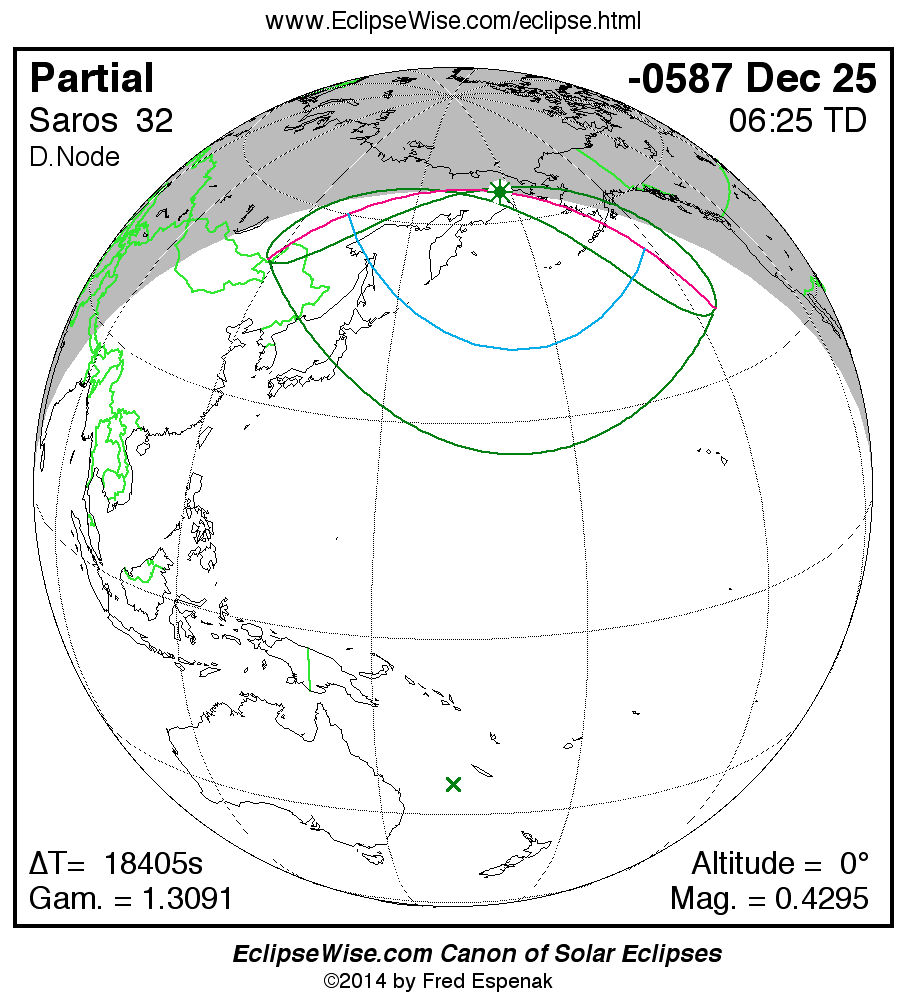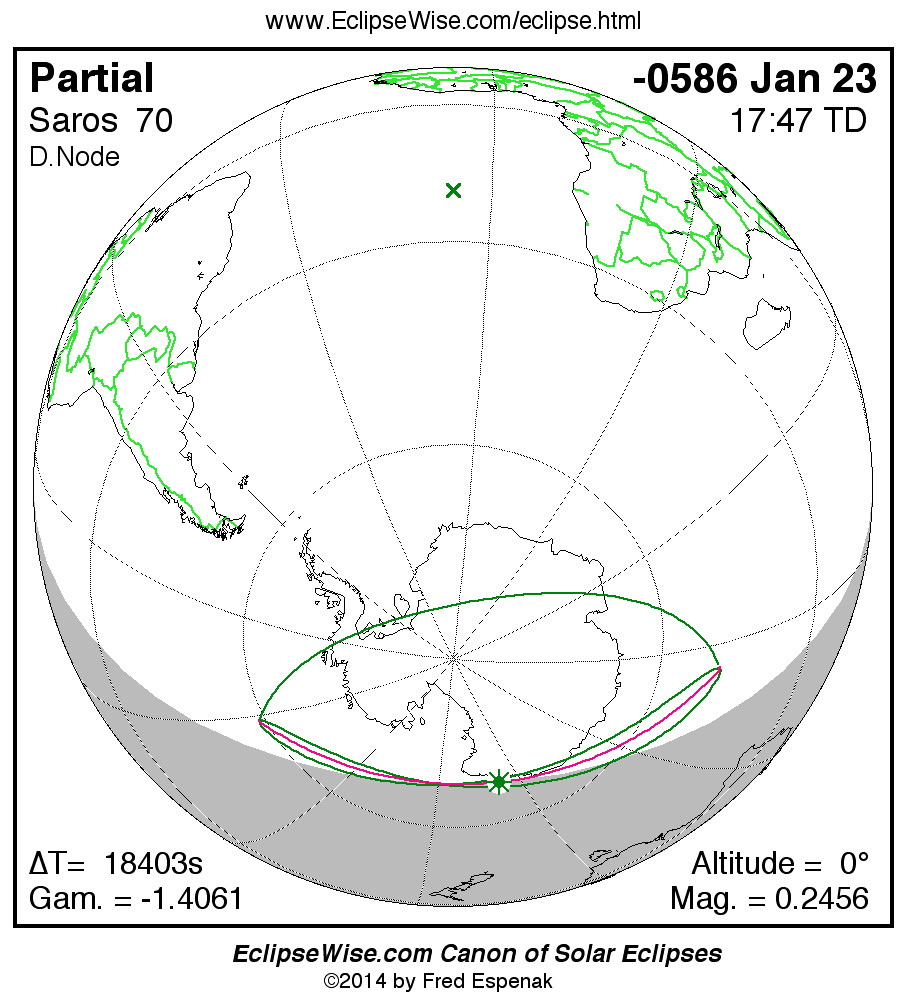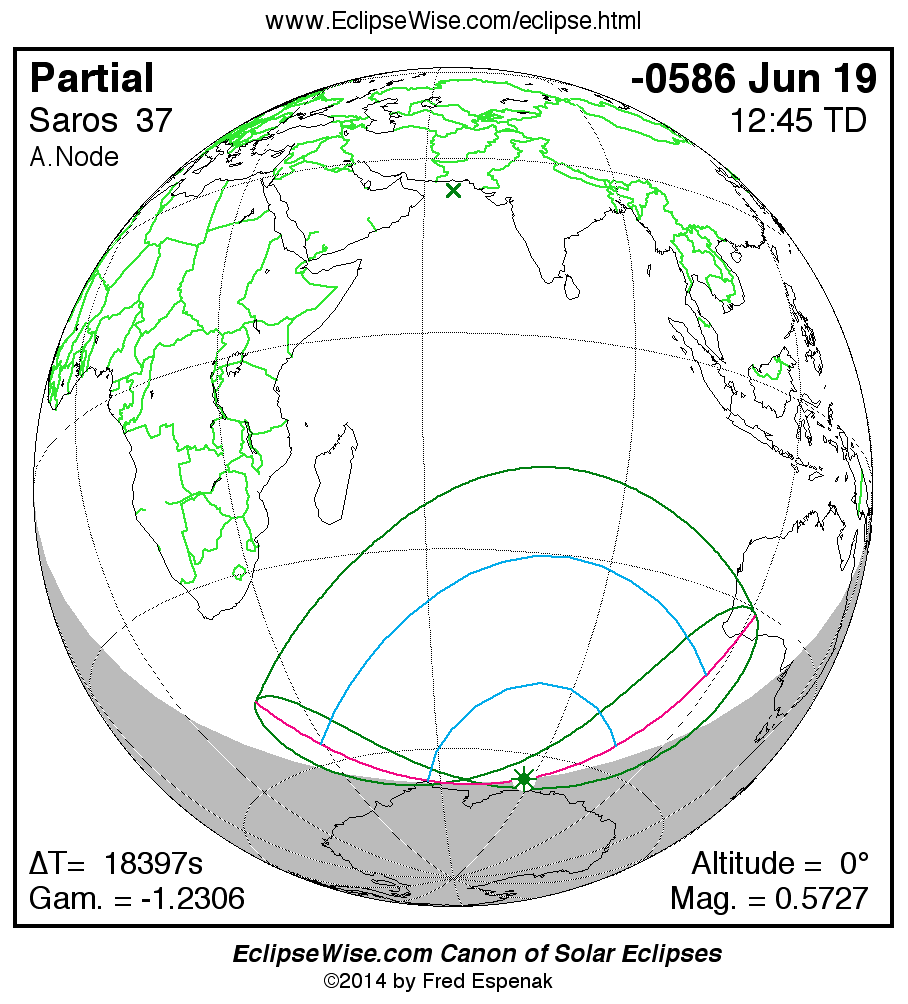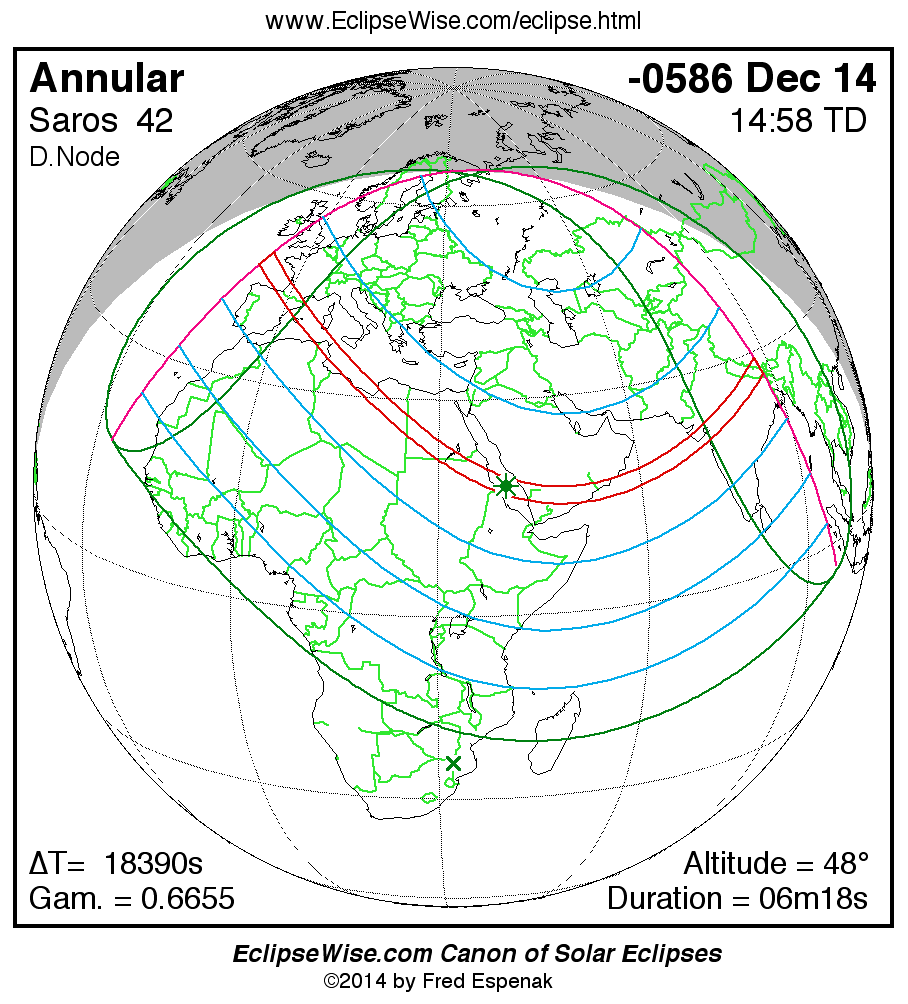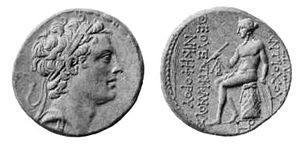
Biblical Figures of Symbolism and the Hebrew Mysteries
Greetings and God Bless everyone on Tune-in-Tuesday tonite! I’m blessed to teach on a topic I was asked to look into by Rev. Nessle on Biblical Symbols. I’d like to thank Jon for his invitation to teach, and In honor of Veteran’s Day, its suitable to open this teaching with a Military themed incident from the history modern of Israel.
As we will consider June 5th (& 6th), 1967 on the regular Jewish calendar as the anniversary of when Jesus left Jerusalem for the Mount of Olives where he ascended up to heaven on Iyar 27. Jesus said that He would soon return from heaven back to the Mount of Olives “in like manner”, (Acts 1:11-12; Zech 14:2-4), on the third day”, which is Iyar 28th.
On Iyar 28th, 1967, or June 7th, 1967, the following key events took place from the top of the Mt. of Olives, on the 3rd day of Israel’s Six-day war, in view of Jerusalem’s old city…
Colonel Mordechai (Motta) Gur, Commander of the 55th Paratroopers Brigade, issued a historic order over his wireless communicator to the intrepid Israeli Defense Forces’:
“All company commanders, as his voice resounded thru the air; “we’re sitting right now on the ridge in view of the Old City. Shortly, we’re going to go into the Old City of Jerusalem, that all generations have dreamed about. We will be the first to enter the Old City. Commander Eitan’s tanks will advance on the left and will enter in at the Lion’s Gate…#1
Having given his historic order, Col. Motta Gur descended the Mount of Olives and approached the Lion’s Gate, with his forces instructing, a tank to blow a breach through the portal. Once achieved, Alpha Company poured in.
Inside the Lion’s Gate is a small court. On the left and slightly uphill Col. Gur saw the Gate of the Tribes, leading to the Temple Mount. Straight ahead lies the Via Dolorosa; the 600 meter processional route through Jerusalem’s Old City representing the path Jesus took to his crucifixion as perfect sacrifice for humanity. This route marks key moments in Jesus’ final journey, as he was condemned by Pontius Pilate that ended in the offering of his sinless life for all mankind. Col. Motta Gur was ordered to secure this lane, that winds its way into the center of the Old City, with the troops final rendezvous to be on the open square above. As the Six-day war began on the anniversary of “40 days” after Jesus’ resurrection and before his Ascension, it aligns with the counting of the Omer- the 50 days between Firstfruits and Passover to Pentecost. This 1967 Six-Day War ended before the Festival of Pentecost [Shavuot], that fell on June 12-13, which all serves to foreshadow the Return of Christ.
According to the lunar calendar of Israel, the Six-Day War for Jerusalem began on Pentecost, an anniversary of Moses’ “6 days” on Mount Sinai. Shavuot also mark the wheat harvest in Israel and God’s revealing of 10 Commandments to Moses and Israel at Mt. Sinai. #2
Ex. 24:15-18 When Moses went up on the mountain, the cloud covered it, and the glory of the Lord settled on Mount Sinai. For six days the cloud covered the mountain-peak and on the seventh day the Lord called to Moses from within the cloud… Then Moses entered the cloud as he went on up the mountain. And he stayed on the mountain forty days and forty nights.
Both May 15, 1948, at reformed statehood of Israel and June 7, 1967, seizure of Jerusalem overlap the anniversary of the “seven days” of Israel overwhelmed at the glory of God on Mt. Sinai also mirror the “seven days” Ezekiel was overwhelmed at God’s glory, (Ex. 24; Ezek. 3:14-16).
Overwhelmed “seven days” by God’s glory (Ezek. 3:15-16, 4:1-17), Ezekiel was then commanded to lay on his side ‘390 + 40 = 430 days’, “a day for each year”, (Ezek. 4). He made a model of Jerusalem and symbolically besieged it.
Exactly seven years later — a year for every day that he sat overwhelmed — the city did indeed fall. The people went into exile to Babylon (and Egypt) for 70 years.
Thus, from the symbolic and literal siege, were 77 and 70 years until the temple was rebuilt, (Zech. 1), (593/586 to 516 BC). God had Ezekiel bear their sin, to forgive them, if they repented. (Ezek. 4). Ezekiel’s symbolic seige of Jerusalem as our subject was a Biblical Symbol for the literal seige that followed.
When it comes to Biblical Figures of Speech our “go to” expert is ever E.W. Bullinger, who says that generally Symbols are some type of material object substituted for a moral or spiritual truth. #3 This by itself is a voluminous topic, and has been the subject of many separate works. Thus only a concise summary of Biblical Symbols is given here, relative to our current application.
Symbols in language, are the use of one thing to represent another. The nearest word to symbol is Mystery… which means secret. Later it came to mean a secret sign. Speaking of Isa. 7:14 “Behold a virgin shall concieve and bear a son,” since this refers to the house of David, Isaiah explains how that which was spoken by God to David, in a mystery actually came to pass.” Perhaps, Justin Martyr adds; “you are not aware my friends, there are many sayings written obscurely; or in parables or in secret signs, or symbols, which the prophets who lived after the persons who said or did them-expounded.” Thus, we will see that Symbols are practically synonymous with the latter use of mystery- meaning a secret sign. Bible examples where it is used in this sense include [Rev. 1:20] where the stars seen by John were a mystery, and in Rev. 17:5-7; Babylon is said to be a mysterion [or symbol] i.e. a secret sign of something spiritual or moral that it represents. #4 In its New Testament; Eph. 5:32 use, refers to symbols or secret signs of spiritual truths and events used to commemorate them.” #5 These NT references must be distinguished from Old Testament mysteries that were addressed to Israel, since the Almighty Himself hid the “Great Mystery about Christ and the Church” in Eph. 5:32, till He revealed it to the Apostle Paul in his Church Epistles.
The Greek word Musterion [G3466] derives from “mustes” one initiated into sacred mysteries which in turn derives from “muo“- to close or shut the lips or eyes, denoted in general something hidden or not fully manifest. It also denotes a sacred thing hidden, naturally unknown to human reason and is only known by revelation from God, [Rom. 16:25, Eph. 1:9, 3:9, 6:19, I Tim. 3:9-16, I Cor. 2:7]. In this sense it denotes spiritual truth couched under an external representation, or similitude, and concealed or hidden thereby unless an explanation is given.” #6
All Metonymies are in a certain sense Symbols. when for example “cup” is used by metonomy for “blessing” [Ps. 16:5, 116:13] or “clay” for “man” Isa. 64:7-8; or “gate” for entrance, one is practically a symbol for the other. By repeated and constant use, one is more tightly linked to the other, and is used as a symbol of it and substituted for it. The transition stage is hypocatastasis or implication. The 3 stages by which a symbol is reached then are: 1. Either by Metonomy or Metaphor, one thing is used to represent another; 2. One is used to imply the other, then 3. It becomes permanently substituted for it as symbol of it. #7
The example of “leaven” causing fermentation was therefore forbidden to use with any sacrifice to the Lord in OT Law. Then its used by Metonomy for that which is corrupt, [I Cor. 5:6-8]. Then by implication its used for corrupt or evil doctrine; [Matt. 16:6]. Finally, its used as a permanent symbol of it [Matt. 13:33], which is why leaven is always used in a bad sense, for that which is corrupt. #8
The Heavenly Father always protected the integrity of His sacrifices in the OT Temple and Tabernacle, which is why he punished Israel whenever they did not follow His laws. God called the Israelites a “rebellious nation that rebelled against Me.” He called them impudent children & stiffhearted, to whom He sent His prophet Ezekiel to warn them of the consequences of their actions, [Ezek. 2:3-5]. God knew the Israelites would not listen to His words via Ezekiel, but by His justice, He desired to give them an opportunity to hear God’s Word in their situation, and repent. [Ezek. 3:17]
Israel’s key military victory over Antiochus IV and his professional Greek army serves as a historical precedent for another key military victory that aligns with the Abomination Desolation timeline in Chart #2 on 12/6/166* BC, and the defeat of the End times Anti-Christ who rises in the next Jubilee after Israel’s six-day War of 1967 started, and Jerusalem is retaken. Both dates of Israeli control in 1948 & 1967 fell on Pentecost, which was the Anniversary when God gave Moses the OT Law on Mt. Sinai, along with the birth of the Church-the Spiritual body of Christ- 10 days after Jesus’ Ascension initiated the New Testament.
Now the length of time the Israelites lived in Egypt was 430 years. At the end of the 430 years, to the very day, all the nation of Israel left Egypt under Moses, (Exod 12:40-41). In 1948 the nation of Israel formed on May 15th, and Gentile control ended with the start of the Arab-Israeli war. The war lasted 430 days, with the calculation of 430 days counted according to the transfer of the week. The war began May 15th, and to signing of the final treaty with Syria on July 20th, 1949 was 431 days, but the week is 430 days apart.) #9
And not only in 1948, but this sign repeats in 1967 when Jerusalem returned under Israel’s control 19 years later. The significance of Israel’s servitude of 430 years in Egypt had a direct bearing on the ministry of Ezekiel as he bore the iniquity of the house of Israel, seen in Ezek. 4:4-6; as God laid the years of Israel’s iniquity according to a number of [390] days (“430 days”, as the KJV reads in Ezekiel; “390+40=430”.)#10
As Bullinger says; “Saros cycles divide into two cycles, one of 666 years and the other of 594 years totaling 1260 years. Since 1260 years is a soli-lunar cycle, so exact that its remainder is only 6 hours, Bullinger stressed these aspects of the 1260 year period but also its double-2520 years.”#13 He held these two–1260 year periods would foreshadow 2-1260 day periods in the end-times, with the last Abomination of Desolation fulfilled, in the Great Tribulation, to reveal the Anti-Christ. [2 Thess. 2:1-3]. Both of these periods are calculated in eclipse cycles. Others have noted a modern 1260 day period as seen in the upper right graphic below. This depicts a 1260 day period between the First Blood Moon of the 2014-2015 Tetrad and the Rev. 12 sign in Sept. 2017.
Figure 1. Revelation 12 Signs in 2017.
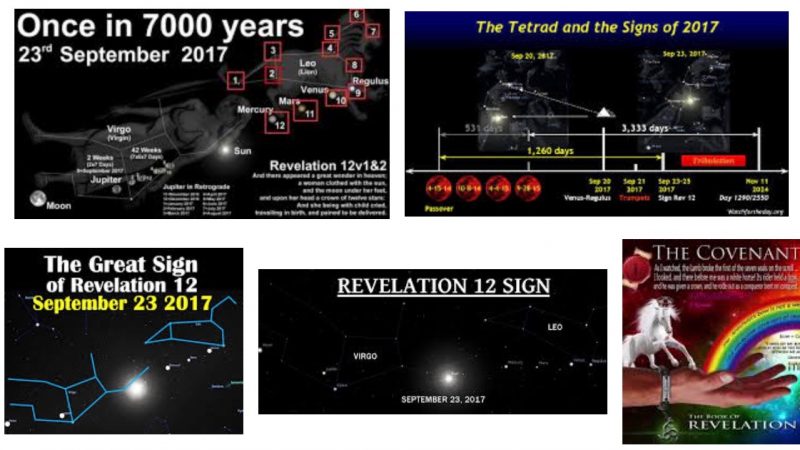
This record of the celestial signs recorded in Rev. 12 include not only the signs of Christ’s birth [Rev. 12:1-2, 5-6] but also signs of the End times concerning Israel. This tells us that the Rev. 12:5 record is not strictly chronological in how all its aspects are set forth. So, key aspects of Rev. 12 may carry varied meaning resting on what dual aspects of the record are being stressed. The sign Virgo as symbolizing the woman, may refer to Mary’s birth of Jesus in verse 5, but can too embody Israel in Rev. 12:6; as she flees to the wilderness and is fed by God for 1260 days, in Rev. 12:14. To ensure the avoidance of private interpretation of Scripture, we must distinguish 1260 days prior to the Great Tribulation vs. included days during the Tribulation period. As we’ll note in Figure 1 Graphic above, these folks forecast the Tribulation in 2017, in error. But this does not, abort another 1260 day period before the Great Tribulation that’s still future.
Thus, with Jerusalem under Gentile rule for 2520 years, Israel was not a nation ruling their own land & city. In Comparison Chart #3 below we find practical function for Saros cycles-Matching 1949-1967 & 1950-1968 Eclipse Tetrads. Bullinger shows the domains of Babylon, Medo-Persia and Greece as 594 years, with the Roman Empire’s dominion of Jerusalem at 666 years; totaling 1260 years. Babylon’s domain fell under Nebuchadnezzar, as the Medo–Persian Achaemenid ruler was King Cyrus the Great. Alexander the Great and the Greeks came next [Dan. 8:21-22] with one of his four kings that rose along with Antiochus IV, who sacked Jerusalem during the eclipses of 168-166BC. The 2nd 1260-year term, held by an Islamist defeat of Jerusalem started from 636-37 AD. #14 The historical king’s conquest of Jerusalem, are Types and forerunner’s of an End-times Anti-Christ in a 4th Beast kingdom, with 10 horns as the “little horn” displaces three of the first kings, in [Dan. 7:8-22, Rev. 13:1-2]. As the Beast Kingdom in Revelation is a composite of Kingdoms and their King’s, in Nebuchadnezzar’s Babylonian dream, so the King’s Antiochus IV, Roman Titus and Babylon also form a composite of the Beast/Anti-Christ himself. Perhaps theories of the rise of an end-time “Imam Mahdi,” are reflected in the 4th Kingdom Islamic defeat of Jerusalem, from 636-37 AD.
In Ezekiel’s account of the fall of Jerusalem, God’s Spirit departs the Temple, leaving Jerusalem in specific stages [Ezek. 10:18-19] (from 592 BC), returning in stages 19 years later in 573 BC, (Ezek. 8, 40). So with, Israel’s current repair in stages-each level is predicted on Biblical timelines in God’s Word, according to our Creator’s Celestial Clockworks, via Eclipse and Jubilee cycles. The next stage in God’s plan for Jerusalem also occured exactly 19 years after Israel became a nation in 1948: with The 1967, Six-Day War.
With a next stage in Israel’s restoration– as the 6-day war, in the next 19-year Metonic cycle, to the day-June 5-10, 1967, we find another exact eclipse aligned in the Blood Moon Tetrad of 168-166 BC with Antiochus IV‘. The war, noted the recapture of the Jerusalem Temple and East Jerusalem. June 5th, 1967, also fell on Pentecost on the Hebrew Calendar. In the same week as the June 7th Partial Solar Eclipse-the 4# eclipse in a Blood Moon Tetrad of 168-166 BC, in Antiochus IV’s seige and destruction of the Jerusalem Temple in 167 BC. The Partial Solar Eclipse presaged Summer season-2 weeks prior to the Summer Solstice Total Lunar Eclipse, where we find a 2nd Blood Moon of this Tetrad framed between these two Solar Eclipses.

A Key record of Biblical symbolism regarding Israel’s sovereignty in their city-state-includes Jerusalem. The prophecies of Ezekiel link to the treading down of Jerusalem and it’s Temple, especially by Nebuchadnezzar in 587-586 BC. Thus, the key dates of Israel’s 1948 statehood, and Jerusalem’s 1967 seizure fell also both on the anniversary of Jerusalem’s fall in 586 BC that occured seven years after Ezekiel’s call (from 593 BC–586 BC). This preceded the 430 days Ezekiel lay on his side in the symbolic Jerusalem siege, to bear Israel’s sin, (Ezekiel 4:1-17, 430=390+40). [390=13 x 30], as 390 years signified not only Israel’s years of apostasy, but also 390 days of Jerusalem’s symbolic siege for Ezekiel, [1`3 months =13 x 30 days]. The Prophet Ezekiel was thus designated by God to bear Israel’s iniquity as seen in Ezekiel’s symbolic seige of Jerusalem in Ezek. 4, below. #15
Both dates of Israeli control in 1948 and 1967 fell on Pentecost, which was the anniversary when God gave Moses the OT Law on Mt. Sinai, with the birth of the Church-the Spiritual body of Christ- 10 days after Jesus’ Ascension opened the New Covenant.
Ezek. 4:4-17 [4:1–5 show the 7 steps of Ezekiel’s symbolic seige of Jerusalem.
4:1 Thou also, son of man, take thee a tile, and lay it before thee, and portray upon it the city, even Jerusalem: 2 And lay siege against it, [1] and build a fort against it, [2] and cast a mount against it; [3] set the camp also against it, [4] and set thy battering rams against it round about. [5] 3 Moreover take thou unto thee an iron pan, and set it for a wall of iron between thee and the city:[6] and set thy face against it, and it shall be besieged, and thou shalt lay siege against it. This shall be a sign to the house of Israel. [7]
In the last sentence of Ez. 4:5 Ezekiel’s symbolic seige of Jerusalem was to be a “sign” [H226-owth] to the house of Israel. H226 as Gen. 1:14 refers to lights of heaven as signs of the times, this includes the cyclic nature of the stars and planets like the Solar and Lunar Eclipse Cycle is a basis of the Calendar of Israel. It can be a sign of something past, as we have seen in many of these events taking place on an anniversary of historic events recalled in Jewish history. “These events are signs and miracles of divine power; [Deut. 4:34, 6:22, 7:19, 29:2, 34:11]. The fulfillment of these foretold events serves as proof of the future fulfillment of their entire prophecy.” #15a
Bullinger notes here regarding Ezek. 4:1-3 that; “As this has to do with the city of Jerusalem, the periods must neccesarily be coterminous with something that affects the ending of its punishment. This was effected solely by the decree for the restoration and rebuilding of Jerusalem…” #16 This of course, is what we find as we put together the elements and time periods of the restoration of Jerusalem in the new State of Israel.
4 Lie thou also upon thy left side, and lay the iniquity of the house of Israel upon it: according to the number of the days that thou shalt lie upon it thou shalt bear their iniquity. 5 For I have laid upon thee the years of their iniquity, according to the number of the days, three hundred and ninety days: so shalt thou bear the iniquity of the house of Israel.
6 And when thou hast accomplished them, lie again on thy right side, and thou shalt bear the iniquity of the house of Judah forty days: I have appointed thee each day for a year. 7 Therefore thou shalt set thy face toward the siege of Jerusalem, and your arm shall be uncovered, and you shall prophesy against it. [390+40=430 days=years]
8 And, behold, I will lay bands upon thee, and thou shalt not turn thee from one side to another, till thou hast ended the days of thy siege. 9 Take thou also unto thee wheat, and barley, and beans, and lentiles, and millet, and fitches, and put them in one vessel, and make thee bread thereof, according to the number of the days that thou shalt lie upon thy side, three hundred and ninety days [390] shalt thou eat thereof. 10 And thy meat which thou shalt eat shall be by weight, twenty shekels a day: from time to time shalt thou eat it. 11 Thou shalt drink also water by measure, the sixth part of an hin: from time to time shalt thou drink.
12 And thou shalt eat it as barley cakes, and thou shalt bake it with dung that cometh out of man, in their sight. 13 And the Lord said, Even thus shall the children of Israel eat their defiled bread among the Gentiles, whither I will drive them. 14 Then said I, Ah Lord God! behold, my soul hath not been polluted: for from my youth up even till now have I not eaten of that which dieth of itself, or is torn in pieces; neither came there abominable flesh into my mouth.
15 Then he said unto me, Lo, I have given thee cow’s dung for man’s dung, and thou shalt prepare thy bread therewith. 16 Moreover he said unto me, Son of man, behold, I will break the staff of bread in Jerusalem: and they shall eat bread by weight, and with care; and they shall drink water by measure, and with astonishment: 17 That they may want bread and water, and be astonied one with another, and consume away for their iniquity.
The prophecies of Ezekiel relate to the treading down of Jerusalem and it’s Temple, especially by Nebuchadnezzar in 587-586 BC. This means that 1948 and 1967 fell also both on the anniversary of the fall of Jerusalem in 586 BC occuring 7 years after Ezekiel’s call (from 593 BC to 586 BC). This preceded the 430 days that Ezekiel lay on his side in a symbolic siege of Jerusalem also, to bear Israel’s sin, (Ezek. 4:1-17, 430=390+40). As 390 years embody [390=13 x 30] not only Israel’s years of apostasy, but 390 days of Jerusalem’s siege also for Ezekiel, [1`3 months =13 x 30 days].#17 This mirrors too, 7 days that Ezekiel sat astonished after the revelation God showed him regarding the corrupt and rebellious state of Israel, [Ezek. 3:15-16]
The Four Beast Kingdoms in Nebuchadnezzar’s Dream
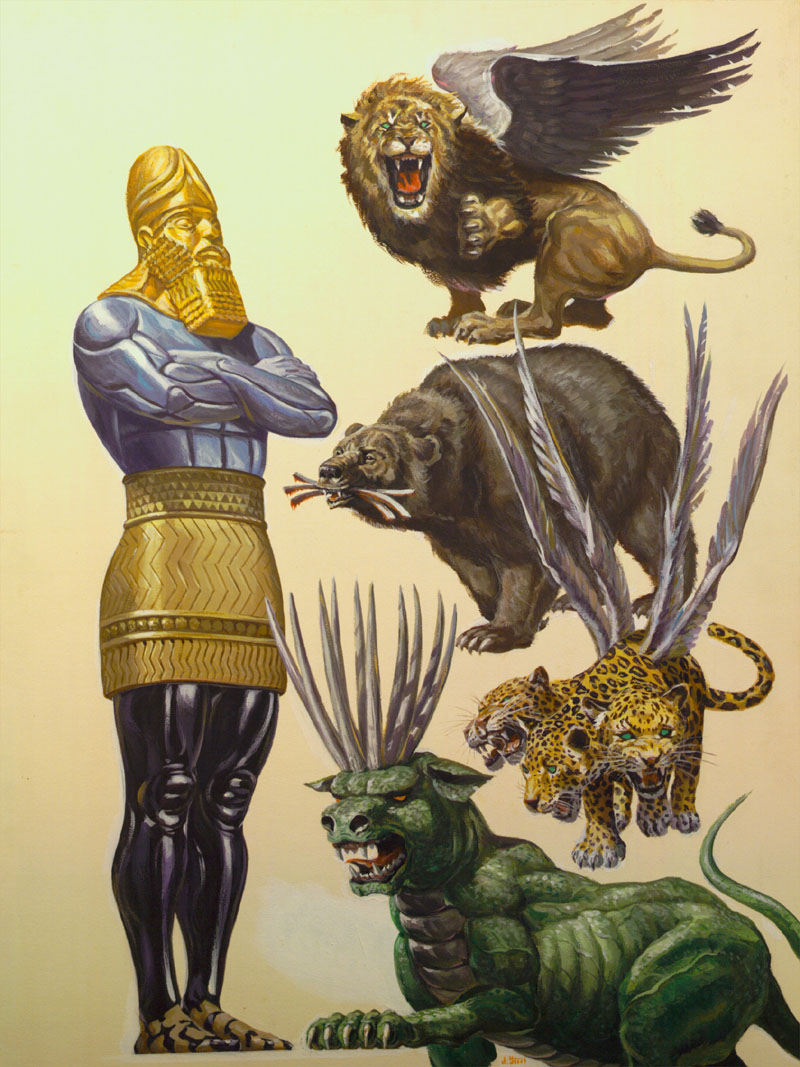
What has escaped the sight of many in Luke 21:24-33, is Jesus’ Jerusalem prophecy of being over-run by Gentiles, in verse 24 sets an immediate context of celestial signs in the Sun, Moon & Stars, and distress of nations in vs. 11-25. This textual que shifts our focus to heavenly signs as eclipses bracketing 168-166 Blood Moon Tetrad, before Rome’s destruction of the Jerusalem Temple in 70 AD, in a key era as Jerusalem’s Temple was over-run, by Necuchadnezzar in 587-586 BC. As we’ve noted numerical patterns linked to 1260 and 2520 years and days, we have revealed not only an alignment with Ezekiel’s prophecies above, but also the The Beast Kingdom’s of Necuchadnezzar’s dream as they align with the Eclipse cycles linked to Blood Moon Tetrads and Jubilee cycles, in a convergence of Bible history, Prophecy with Astronomical history, in a mutual basis of collaboration and verification, revealing the Hand of God though history, relative to His judgment and restoration of Jerusalem and Israel, with the Gentile nations involved in this saga.
With Israel’s recapture of Jerusalem in 1967, and events pertaining to the Temple Mount, we can see the early restoration stages of Israel by God over His city and State.
Figure 2. Blood Moon Eclipses visible over Jerusalem.

For example, the final Super Blood Moon of the 2014-15 Blood Moon Tetrad took place after an opening of the Hebrew 50-year Jubilee on Atonement Day, Sept. 23rd, 2015, exactly 2 years before the Rev. 12 sign on 9/23/2017. This is notable since the 9/28/15 Super Blood Moon was the 1st Blood Moon in this Tetrad, visible in Jerusalem, as the city of God was liberated by Israel for the first time in near 2000 years in a preceding Jubilee year-1967 marked too, by the previous Blood Moon Tetrad of 1967-68.
The lunar triples framing the 2014-15 Blood Moon Tetrad not only recall the Jerusalem Temple razing on 2 key dates in Israel’s history, in the Hebrew Sabbath years of 586-587 BC by Nebuchadnezzar and by Titus in 69-70 AD, that also tie to the Rev. 12 sign and a Jupiter–Regulus triple union of Christ’s birth but the Jubilee Calendar also marks 27-28 AD as a Jubilee year, when Jesus opened his ministry to Israel, seen in [Isa. 61:1ff and Lk. 4:18-19]. This reveals ‘s Daniel’s prediction of a Third Jerusalem Temple prophecy [9:27], and the Apostle Paul; [2 Thess. 2:3-4].
| Comparison Chart #3 Saros Matching 1949-67 & 1950-68 Eclipse Tetrads #18 | ||||
| Eclipse AD | Saros # | Jew’s Feasts | Eclipse AD | Scripture |
| 4/13/1949 | 121 | Passover | 4/24/1967 | Am 9:11-15 |
| 10/07/1949 | 126 | Tabernacles | 10/18/1967 | |
| 4/02/1950 | 131 | Passover | 4/13/1968 | Ezek. 36:24 |
| 9/26/1950 | 136 | Tabernacles | 10/6/1968 | |
In Ezekiel’s history of Jerusalem’s fall, he wrote as God’s Spirit exited in stages, (c. 592 BC) #19 to return 19 years later– 573 BC in stages, (Ezek. 8, 40). Likewise, in Israel’s restoration–these stages align to the day, in prophecy and eclipse cycles via 19-year Metonic cycles, in Israel’s 1948 statehood reform: and a 1967, Six-Day War. This six-day restoration, & Temple Mount seizure, with East Jerusalem made history. The June 5-10, 1967, week recalls a June 7, 167 BC Total Solar Eclipse- in the 168-166 BC Blood Moon Tetrad, in Part. 1 of a 3 part study just concluded over the last 3 blogs. June 5th 1967, was also Pentecost. A 19- year Metonic cycle fits Ezekiel’s (573 BC) temple–vision-of a reformed Israel over 1260 + 1260 yrs.= 2520 yrs. (2520 days are also a 7-year match– of the week of God’s call to Ezekiel, [Ezek. 3:15-18] {360 x 7= 2520 days.} #20
This grants that 7 years on the regular Jewish calendar equals 2539 days in both 1948 and 1967. Thus, the 7th anniversary after Israel’s statehood took place exactly 2539 days later on a normal Jewish calendar, in (1948-1955). And the same is true of the 7th anniversary of the 1967 War, (1967-1974). Hence, in God’s Celestial masterplan, 2539 days relates to a previous 2539 years
looking back to Ezekiel’s prophecy in 573 BC!” #21
This is an example of a Biblical Prophetic Symbolism with a dual significance that fits for both days and years.
This should direct our focus towards the heavenly signs around the eclipses framing Rome’s destruction of the Jerusalem Temple in 70 AD, by Titus as a key period when the Jerusalem Temple was down-trodden by the Gentiles. As these 70 AD signs hold not only a Rev. 12 sign of a triple union of Jupiter and Regulus, not to mention the Jupiter–Venus union in Leo as at Christ’s birth, it points to relevant Celestial signs of Christ’s First Advent in light of his Return.
Also, as Israel seized Jerusalem in 1967, followed by events around the control of the Temple Mount, we find the first stages of God’s restoration of Israel. As Luni-solar eclipse cycles are part of the heavenly signs of Sun, Moon & Stars, including modern Blood Moon Tetrads, there is much we can learn from this study.
Jerusalem fell starting the week of Tammuz 9, matching the middle of the same week & month of God’s Call to Ezekiel exactly 1260 + 1260 days [7 years] earlier, [Dan. 9:24-27]. Israel spent exactly 430 years in Egypt (Ex. 12:41), and Ex. 2:11-15, (w/Acts 7:23-29), we find that Moses thought to deliver the nation 40 years earlier, but was forced to flee instead for his life. Thus, we have a like break-down of 430 here as Ezekiel 4:4-6 (i.e., 390 + 40 = 430 years). #22 This also relates to the Hebrew Alphabet Acrostic in Lamentations, mourning Jerusalem’s fall. Here the Jerusalem Temple burned on 7th & 10th of Av, [Jer. 52:12, 2 Kgs. 25:8] as it did under Nebuchadnezzar in 587-586 BC and Titus in 70 AD. In the 9th yr. of Nebuchadnezzar as the Temple burnt on the 9th day of the 4th month, that was made a fast day. [Jer. 39:2, 52:12-14].
Exodus 12:40-51
40 Now the sojourning of the children of Israel, who dwelt in Egypt, was four hundred and thirty years. 41 And it came to pass at the end of four hundred and thirty years, even the selfsame day it came to pass, that all the hosts of the Lord went out from the land of Egypt.
42 It is a night to be much observed unto the Lord for bringing them out from the land of Egypt: this is that night of the Lord to be observed of all the children of Israel in their generations.
43 And the Lord said unto Moses and Aaron, This is the ordinance of passover: There shall no stranger eat thereof: 44 But every man’s servant that is bought for money, when thou hast circumcised him, then shall he eat thereof.
45 A foreigner and an hired servant shall not eat thereof. 46 In one house shall it be eaten; thou shalt not carry forth ought of the flesh abroad out of the house; neither shall ye break a bone thereof. 47 All the congregation of Israel shall keep it. 48 And when a stranger shall sojourn with thee, and will keep the passover to the Lord, let all his males be circumcised, and then let him come near and keep it; and he shall be as one that is born in the land: for no uncircumcised person shall eat thereof.
49 One law shall be to him that is homeborn, and unto the stranger that sojourns among you. 50 Thus did all the children of Israel; as the Lord commanded Moses and Aaron, so did they. 51 And it came to pass the selfsame day, that the Lord did bring the children of Israel out of the land of Egypt by their armies.
God’s original Covenant with Abraham/Israel was unconditional, [Gal. 3:17-20]. It was 400 years till the birth of Isaac-Abraham’s seed, and 430 years from The Promise made here, by His Godly Covenant with Abraham and his seed. The same 400 years from Isaac’s birth. [Acts 7:6]
Gen. 15:12-21
12 And when the sun was going down, a deep sleep fell upon Abram; and, lo, an horror of great darkness fell upon him.
13 And He said unto Abram, Know of a surety that thy seed shall be a stranger in a land that is not theirs, and shall serve them; and they shall afflict them four hundred years; 14 And also that nation, whom they shall serve, will I judge: and afterward shall they come out with great substance. 15 And thou shalt go to thy fathers in peace; thou shalt be buried in a good old age. 16 But in the fourth generation they shall come hither again: for the iniquity of the Amorites is not yet full.
17 And it came to pass, that, when the sun went down, and it was dark, behold a smoking furnace, and a burning lamp that passed between those pieces.
18 In the same day the Lord made a covenant with Abram, saying, Unto thy seed have I given this land, from the river of Egypt unto the great river, the river Euphrates: 19 The Kenites, and the Kenizzites, and the Kadmonites, 20 And the Hittites, and the Perizzites, and the Rephaims, 21 And the Amorites, and the Canaanites, and the Girgashites, and the Jebusites.
In this last section we will reference how the USA was trisected by eclipses in seven eclipse years from 2017-2024, as prelude to another seven year Eclipse cycle in 2027-2034. As we inspect Earth’s geography of North America and the Middle East that the Almighty Creator marked with exactitude of His eclipse cycles, we find future eclipses of 8/2/2027 and 3/20/2034 cross over the middle-east boundaries of the Promised Land that God marked for Abraham’s Seed in His Everlasting Covenant that He made with Abraham, Isaac and Jacob. It’s hard to find any nation in history so perfectly geographically trisected with Solar Eclipses as the USA is by eclipses on 8-21-2017, 10-14-2023 and 4-8-2024…over a 2422 day span. “A“ is for Alpha, (Hebrew) Alef , This “A” is comprised of three shadow lines: two X’s. The 8-21-2017 and 4-8-2024 are Hepton Total Eclipses, both falling on Monday’s.
USA-Three Solar Eclipses in 7 years starting in 2017 – See the A? #23
HEBREW IS READ RIGHT TO LEFT… ALEF AND THE TAV
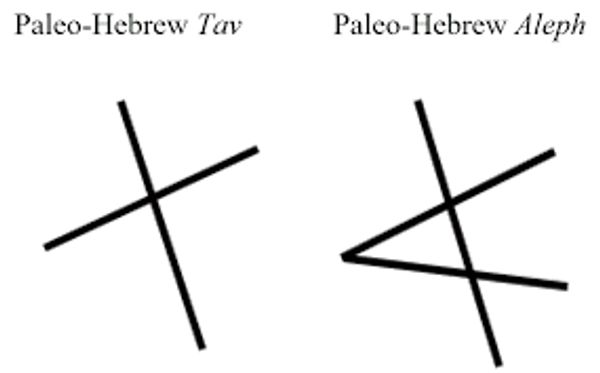
Paleo-Hebrew was the script in which the Old Testament was written, not the modern script that is currently used (being standardized around 200 B.C.)
On the left is a Tav–the last letter (22nd) of the Hebrew alphabet– essentially a cross or X in the above illustration.
On the right is the Paleo-Hebrew “Aleph“–the first letter of the alphabet. The Tav is being written by the shadow of the Moon on both locations. The Aleph-(where we get Alpha and our letter A) is written by shadows of the 2017, 2023 and 2024 eclipses over the USA. #24
The Alpha and the Omega

Reading right to left, “I am Alpha and Omega, the beginning and the end, the first and the last.” –Rev. 22:13… A look back at the Aleph (A) over the USA in the last section depicts the Tav and “X” over the heartland of the USA.
Total Solar Tav over America-2017 and 2024
As the Tav, forms the cross, the 22nd, and last letter of the original Hebrew alphabet- it means truth. In the Greek alphabet, X is the symbol for the letter ‘chi. ‘ Chi (or X) is the first letter in the Greek word for “Christ” and can stand in for the word “Christ“, which is why people can write “Happy Xmas.” In the early days of the Christian church, Christians used the letter ‘X’ as a secret symbol to indicate their fellowship in the Christian Church to others.
The above map illustrates the Total Solar Eclipses of 2017 and 2024 over America, both on Mondays, separated by a 2422 day (7-eclipse year) span.
The coming Middle-east Eclipse crossing in 2027 and 2034 also shows an X.

[map from 1260d.com] 25
As the author points out this eclipse crossing in view of the Giza Plateau, embodies a southern border of the land God promised to Abraham in Gen. 15:8 [Ex. 6:1-8]. As we recently finished 120 hours of teaching in our OT History class over 1.5 years, showing how the Jews dwelt in the land of Israel starting with Abraham for 1900+ years! This evident unchanging truth of Bible history will never be erased by holocaust denying terrorists, as God’s Word forever stands. On Aug 2nd, 2027 and March 20, 2034 Total Eclipses intersect near the Valley of the Kings in Egypt…are also divided by a 2422-day span (seven Eclipse Years). Like the American Total Eclipses, both Hepton Cycle eclipses occur on Mondays, with all 4 crossing eclipses are members of the same Hepton Cycle.
We have supplied the Matching Comparison Charts for both 2027 and 2034, where the Aug 2nd, 2027 and March 20, 2034 Total Eclipses crossover the Middle-East above. An intriguing element here is the time from 27 AD to 34 AD 2000 years prior to the Matching-Repeating Eclipses of modern times to those of Queen Esther and Mordecai in ancient Persia, contain all feasible dates of the Crucifixion and Resurrection of Jesus Christ, but our research shows Christ was Crucified April 28th, 28 AD.
| Comparison Chart for Repeating Eclipse Tetrads 2027 AD with 477 BC #26 | ||||||
| Eclipse Date AD | Source | Saros | Sun/Moon | Eclipse Date BC | Source | Saros |
| 2/06/27 | T&D | 131 | Ann. Solar | 2/06/477 | LBAT | |
| 2/20/27 | NASA | 143 | Pen. Lunar | 2/21/477 | NASA | 64 |
| 8/02/27 | T&D | 136 | Near Lunar | 8/02/477 | LBAT | |
| 8/17/27 | NASA | 148 | Pen. Solar | 8/16/477 | NASA | 69 |
The Aug. 2nd, 2027 eclipse over east Saudi Arabia, and the Nile river valley, projects into the rest of the 21st Century as the longest eclipse, visible in Israel forming an “X” over middle eastern boundaries, of the original lands Promised to Abraham and his seed.
| Comparison Chart for Repeating Eclipse Tetrads 2034 AD with 469 BC #27 | ||||||
| Eclipse Date AD | Source | Saros | Sun/Moon | Eclipse Date BC | Source | Saros |
| 3/20/34 | Nasa | 130 | Tot. Solar | 3/20/469 | LBAT | 51 |
| 4/03/34 | NASA | 142 | Pen. Lunar | 4/03/469 | NASA | 63 |
| 9/12/34 | Nasa | 135 | Ann. Solar | 9/12/469 | LBAT | 56 |
| 9/28/34 | NASA | 147 | Part. Lunar | 9/28/469 | NASA | 68 |
These eclipses occur on the 19-year Metonic just as Spring Solar Equinox eclipses match calendar days of 3-20-2015 and 3-20-2034. A lunar tetrad occurred in 2023 and will in 2033, while a High Holy day Tetrad occurs in 2033 and 2034 (though the eclipses are not total in 2034). In each case, a key solar eclipse on the Spring Equinox occurs between lunar eclipses on High holy days of Judaism. #28
AMERICAN OMEGA–THE TOTAL ECLIPSES
Monday August 21st, 2017
The USA divided in half on Aug, 2017, 7 months and 1 day after Trump’s first inauguration as the 45th US President, first day of the month of Elul, Hebrew year 5777. #29 This was verifed in a 2024 Fall re-election as 47th US President. In Jewish tradition, the month of Elul is a time of repentance to prepare for the High Holy Days of Rosh Hashanah and Yom Kippur.
With these examples of Bible Prophecy that fit for both days and years, we have seen an underlying number pattern of Scriptural structure as identified by E.W. Bullinger and others. These cases of Biblical Symbols as they relate to the Hebrew Mysteries, give us prime examples of the depth & beauty of how God loves and works with His people, and I’m so blessed and thankful to be named and counted among His Chidren. As we have noted the Hand of God’s judgment over Israel and mankind in the brief but mighty instances in the history of God’s Word, we should thankfully respond to the authority of the Almighty with humility, for His ultimate Grace and gifts of Love to us for our blessings, and give our utmost for His Highest, as the only proper response to His calling on each of our lives.
God’s Abundant Blessings,
Rene’
Footnotes
1. From the Archives of the Avi Yaffe Recording Studio in Jerusalem.
2. https://en.wikipedia.org/wiki/Shavuot
3. Companion Bible, Appendix 6, p. 8, E.W. Bullinger.
4. Figures of Speech used in the Bible. p. 769, E.W. Bullinger.
5. IBID, p. 770.
6. [Lexicon to the OT & NT edited by Spiros Zodhiates in Greek Hebrew Key Study Bible, p. 1712 on Strong’s #[G3466].
7. Figures of Speech used in the Bible. p. 770, E.W. Bullinger.
8. Ibid p. 770
9. [360calender.com]
10. https://eclipsewitness.com/eclipse-judgment-series
11. Companion Bible marginal note on [Ezek. 4:4-6] E.W. Bullinger
12. [360calender.com]
13. “Witness of the Stars,” ppg. 188-190 , E.W. Bullinger.
Dates for Solar and Total Lunar Eclipse data are From NASA [https://eclipse.gsfc.nasa.gov/SEcat5/SE-0199–0100.html]
14. Witness of the Stars, ppg. 177-184, E.W. Bullinger.
15. www.1260-1290-days-bible-prophecy.org
15a. Gesenius Hebrew Chaldee Lexicon to the OT. p. 24 #[226-owth]
16. Companion Bible marginal note on 390 days of Ezek. 4:5 [Ezek. 4:1-3] E.W. Bullinger
17. www.1260-1290-days-bible-prophecy.org
18. Comparison Chart #4 Saros Matching 1949-67 & 1950-68 Eclipse Tetrads, [Supernatural by Design Youtube video-“This Purim Eclipse Changes Everything. Pt. 1.”]
19. https://www.1260-1290-days-bible-prophecy.org/bible_prophecy-Israel-nation-1260-years-x2-b-details.htm#Seven-years
20. www.1260-1290-days-bible-prophecy.org
21. IBID
22. https://www.1260-1290-days-bible-prophecy.org/1290-days-years-equals_dates-bible-prophecy.htm
23. https://eclipsewitness.com/eclipse-judgment-series
24. IBID
25. IBID
26. LBAT-Late Babylonian Astronomical Tablets-Star Dairies of Ancient Babylon available via Sachs-Hunger (1988-1996) and Hunger (2001).
T&D; [https://www.timeanddate.com/eclipse/]
27. NASA’s Five Millennium Canon of Eclipses for these dates [https://eclipse.gsfc.nasa.gov/5MCLE/5MCLE-Figs-04.pdf]
28. https://eclipsewitness.com/eclipse-judgment-series
29. IBID







